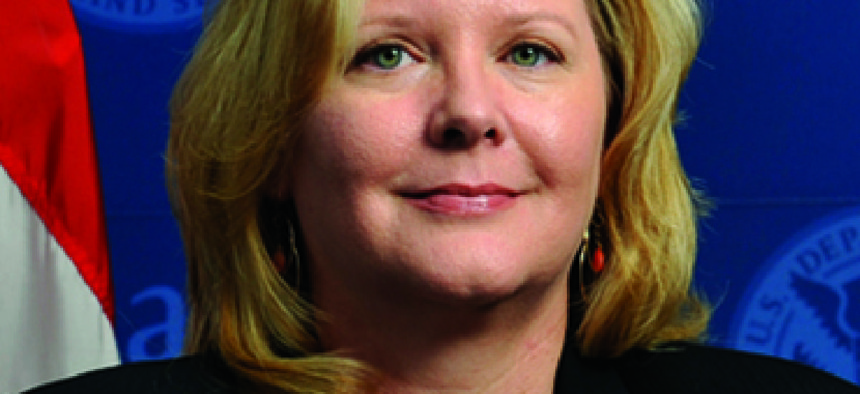DHS IT: Real progress or persistent problems?

Oversight hearing explores agency savings and agile development efforts, urges more attention to delays and overruns.

Margie Graves, Deputy DHS CIO, outlined the agency's efforts in agile development and cloud services during testimony before a congressional panel.
Watchdog agencies have singled out a number of critical Homeland Security Department IT systems falling behind schedule or going over budget, and lawmakers on March 20 demanded answers about the shortfalls behind some $4 billion in investments.
DHS officials testified that efforts are under way to rectify its 21 troubled IT programs, including transitioning to cloud platforms and agile development to improve information-sharing operations.
In 2013, the Homeland Security Department budgeted roughly $4 billion for 68 major IT programs, a third of which – $1 billion worth – were identified by the Government Accountability Office as not meeting commitments. DHS Deputy CIO Margie Graves outlined the agency's efforts in agile development and cloud services that she said are saving money and improving efficiency, as part of her testimony to the Homeland Security committee's subcommittee on oversight and efficiency.
"The key here is to provide a platform that allows us to operate in the information-sharing environment," Graves said. "That’s the whole reason why DHS was born in first place, because the failure to share information may have resulted in 9/11."
DHS Deputy Inspector General Charles Edwards, who noted that IT spending accounts for 15 percent of the agency's total budget, called for increased management oversight, including strengthening the authorities of the CIO role. Edwards cited poor interoperability and aging IT infrastructure as two major challenges and underscored the importance of DHS' platforms to counterterrorism, border management and national security.
According to David Powner, director of IT management issues at GAO, there are signs of progress at the agency. Specifically, he noted that the use of centers of excellence and tiered governance structure as examples of better IT performance. He also said that the Office of Management and Budget's IT dashboard, offering transparency on 800 IT investments, "shows DHS trending in right direction," and that recently there have been fewer DHS IT projects at risk than in past.
Still, Powner said, there remain too many critical IT programs deviating on costs and schedules, and he called for more comprehensive implementation of governance and program management reforms.
Graves said agency officials are looking to improve on IT program issues as the department consolidates data centers, broadens cloud offerings and, perhaps most importantly, employs agile development in systems and processes.
Graves used as a key example Customs and Border Protection's Automated Commercial Environment, or ACE, which automates business processes for trade. By allowing agents in the field to work with system developers to build profiles for trade partners on a continuing basis, information is better shared and changing requirements can be addressed in a more flexible manner, Graves said.
"What we're doing in implementing agile methodology... is creating user stories," Graves said. "The requirements are drafted into the user stories, developed in concert with embedded operational entities throughout development cycle. These users are sitting with the developer, talking about use cases, testing at appropriate times when functionality is actually delivered, providing immediate feedback that is continuously incorporated into the development cycle. Everyone is constantly at table; there's no separation of church and state. It’s a continuous process and continuous integration."
Graves also noted that DHS is in the midst of its enterprise e-mail migration, with roughly 109,000 users onboard and 120,000 to go. At $7 per user, DHS was able to bring costs down considerably, even compared to similar commercial offerings. At the Federal Emergency Management Agency, that cost shrunk from $24 per user, she said.
"These are really quantifiable savings that we have to talk about," she said. "And we have 12 of these enterprise cloud services, each one of which has a story attached to it."
While the cloud transition marks a significant step for the department, Powner noted that return on investment still needs to be verified and made more transparent.
"As DHS moves toward this incremental development, it's great that we're going incremental -- but the bottom line is if we're going to spend $2 billion on 32 investments, what are we getting?" he said. "And then there's the follow up that those functionalities were delivered. So the key question is what are we getting from those investments in 2013?"





